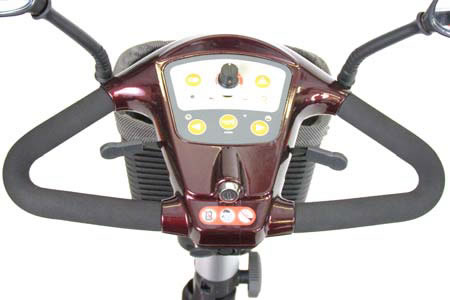Mobility Scooter Components
Tiller
The tiller is the control and steering mechanism for the scooter, usually containing the controls to drive the scooter forward or in reverse, as well as steering the front wheel or wheels. Most scooters offer one type of standard tiller with other controllers available as options. Possibilities include thumb levers, loop handles, joysticks, and others.
Thumb levers are the most common controls, allowing the user to keep both hands on the handle bars while using the left thumb to power the scooter in reverse and the right to power the scooter forward.
The amount of pressure applied to the lever will determine the speed of the vehicle (unless it is equipped with a proportional speed control).
Consequently, a fair amount of hand control is necessary for safe operation. Finger control levers or a joystick may be alternatives. Some manufacturers may also be able to adapt controls to user requirements at extra cost.
The tiller itself is often an upright post attached to the front wheel. However, it is also becoming common to find flexible, accordion-style tillers which can be adjusted for height and/or position.
 A tiller-mounted scooter control panel
A tiller-mounted scooter control panel
This not only enables the user to place the tiller in the most comfortable position while driving, but also allows it to be moved up and out of the way during transfers. In the absence of a dashboard or shroud over the front wheel, a control box with the key lock, battery level indicator, speed controller, and other features may be affixed to the tiller handlebars.
